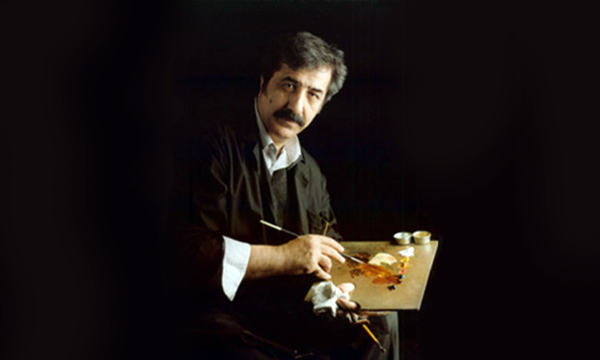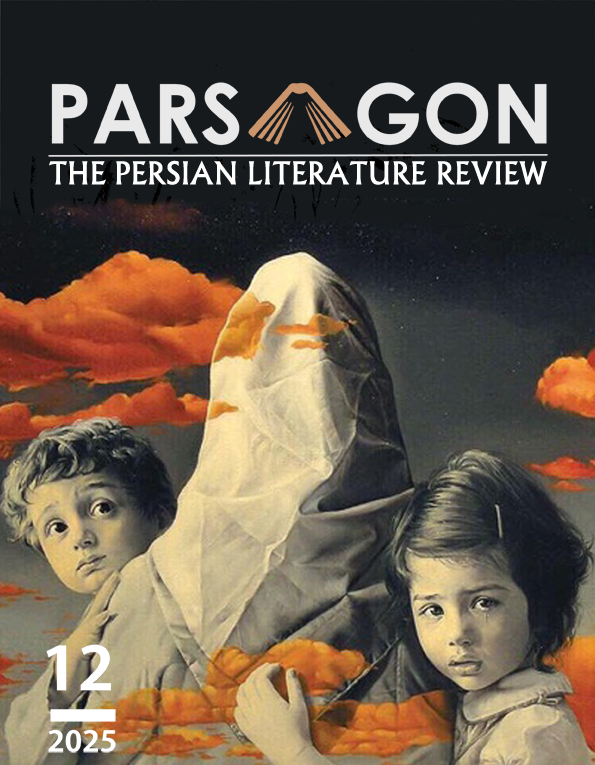
Morteza Katouzian (b. 2 July 1943, Tehran) is a major figure of late twentieth-century Iranian painting whose career bridges commercial graphic design and a committed figurative realism that has engaged social memory, family life, and the traumas of modern Iran. Born into a culturally engaged, middle-class household, Katouzian is largely self-trained; he worked for many years in graphic design (posters, book covers, brochures) before becoming widely known for his oils and drawings exhibited in Iran and circulated in galleries and online collections. This early career in applied graphics shaped the clarity of his compositions and his economy of visual narrative.[1]
Stylistically Katouzian is best described as a realist-figurative painter who often folds subtle surreal or symbolic elements into otherwise everyday scenes. His technique favours meticulous draftsmanship and close attention to light, skin and fabric textures—qualities that place him in the same broad current of Iranian realism that emphasizes human presence, melancholic stillness, and psychological portraiture. Across his oeuvre recurring motifs—family groups, solitary figures, and small domestic objects—function as social signifiers: the worn coat of a worker, the downcast face of a child, the supportive curve of a mother’s shoulder. These formal choices create paintings that read as lived, intimate narratives rather than theatrical tableaux. [2] Katouzian’s role as a teacher and mentor is also part of his significance; through such pedagogical ties Katouzian helped transmit a rigorous realist technique to younger generations. His influence, therefore, is both pictorial and institutional, contributing to the persistence of technical realism in contemporary Iranian art. Among Katouzian’s important works are intimate portraits and socially charged pictures catalogued in public repositories and gallery lists: pieces such as “Doubt” (2003), “The Forgotten” (1990), “Flight 655” (1998), and numerous studies of family life and children that recur throughout his career. These works together map a range from personal psychological states to explicitly historical commentary. [3]

The cover of volume #12 displays a detail of an artwork titled “Air-Raid Siren” by Morteza Katouzian created in 1980-1. The detail encompasses a mother and her tow children during one of Iraq’s invasions to Iran.
“Air-raid Siren” (آژیر خطر), painted around 1980–81, is one of Katouzian’s most discussed pieces because it conjoins the private and the political. The canvas depicts a woman turned away from the viewer, her shoulders broad and steady as she carries two children on her back; their faces register fear and dependence. The title fixes the scene in a civil-defensive moment—an air-raid alarm—yet the painting refuses spectacle. Instead it compresses tension into body language: the mother’s supportive shoulders become the painting’s structural axis, the children’s small, frightened faces the affective core. Critics reading the work note its memorial function—produced a year after the Iraqi invasion, the painting registers nation-level danger through the private labour of care. Katouzian thus transforms a public emergency into an image of maternal endurance: the siren is audible off-canvas, but its moral and emotional meaning is embodied in the painted family. [5]
The significance of Katouzian’s painting is due to his realism sustaining an ethical attention to ordinary people while allowing images to register larger historical wounds – traumatic wounds that are still bleeding after four decades. His technical mastery and quiet moral imagination make paintings like “Air-Raid Siren” linger: factual in their depiction, interpretively rich in what they imply about survival, care, and the cost of war on domestic life.
[1]: https://www.arel.ir/fa/News-View-700.html?utm_source=chatgpt.com “آثار استاد مرتضی کاتوزیان”
[2]: https://www.wikiart.org/en/morteza-katouzian?utm_source=chatgpt.com “Morteza Katouzian – 54 artworks – painting”
[3]: https://www.wikiart.org/en/morteza-katouzian/all-works?utm_source=chatgpt.com “Morteza Katouzian – 54 artworks – painting”
[4]: https://www.artymag.ir/counter/S6kw/?utm_source=chatgpt.com “تحلیل تابلوی نقاشی«آژیر خطر» از مرتضی کاتوزیان”

Leave a Reply